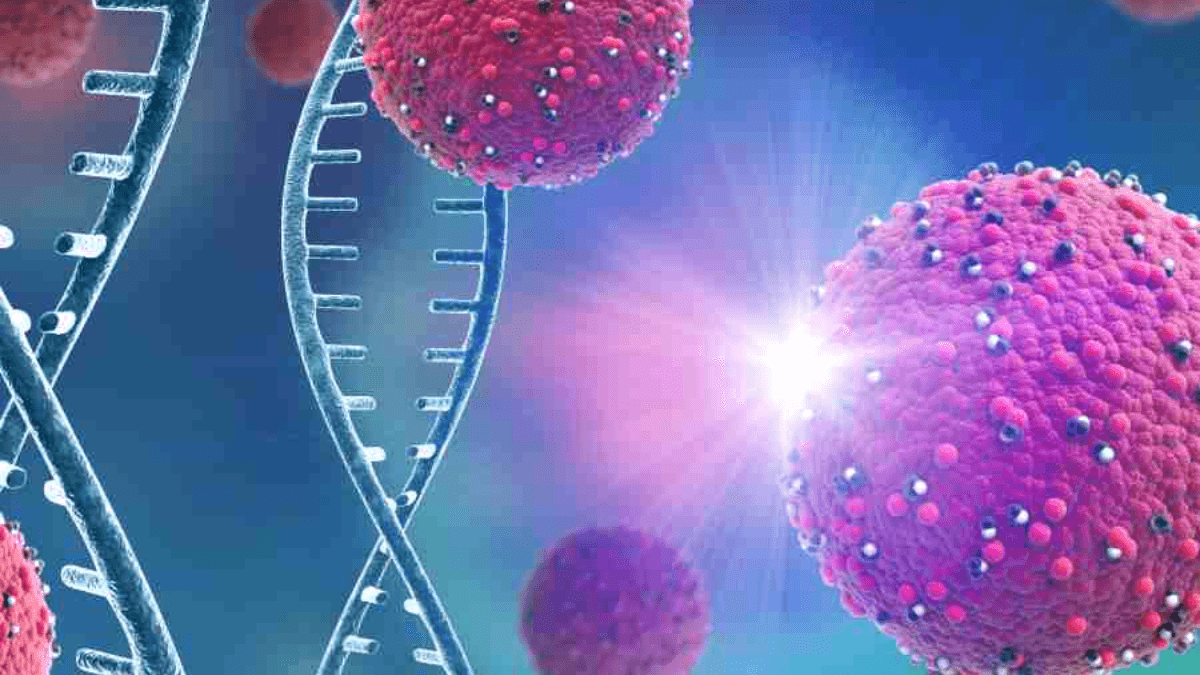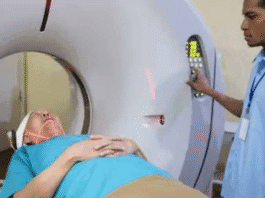Prolegomenon
Ozempic-The drug for weight loss has become one of the most talked-about breakthroughs in modern medicine, but very few people know that the body itself already holds the secret to producing something similar. In laboratories and clinics, this treatment has been linked with rapid fat reduction and improved metabolic health, but scientists have now discovered that human cells naturally create their own version of the drug for weight loss without the need for external medication. It sounds like science fiction, yet research points directly toward the pancreas, one of the body’s most underestimated organs, as the key player in this fascinating mystery.
The fascinating story begins with the pancreas, which is packed with microscopic clusters of cells called the islets of Langerhans. For decades, these islets were primarily recognized for the role of their alpha cells in producing glucagon, a hormone that raises blood sugar levels when they dip too low. Glucagon has always been considered essential to maintaining equilibrium in people prone to hypoglycemia. But the story did not end there. The new chapter in medical science suggests that these same alpha cells are capable of much more than previously believed. They hold the power to produce GLP-1, a hormone long celebrated for its ability to mimic the effects of the drug for weight loss.
GLP-1, or glucagon-like peptide-1, is a molecule already targeted by pharmaceutical companies to develop drugs that assist people in losing weight. The drug for weight loss works by activating this hormone, suppressing appetite, slowing down the digestive process, and balancing blood sugar. But while many imagine this hormone as something only delivered in the form of an injectable pen or prescription treatment, the body itself can generate it—if the right conditions are met. The revelation is almost shocking: alpha cells in the pancreas, under the right influences, can create this powerful hormone that melts fat and regulates energy in ways very similar to the medication.
Yet the problem lies in the fact that these alpha cells are unpredictable. They are not consistently releasing GLP-1 into circulation. It’s as if they are moody little factories, choosing when to work and when to remain silent. This inconsistency explains why, even though the machinery for weight control lies within us, obesity and fat accumulation remain rampant. The human body needs triggers, cues that awaken these cells to begin their hidden work. Scientists at Duke University have discovered that two specific proteins, PC1 and PC2, act as these essential triggers. Without them, the alpha cells remain dormant; with them, they become an internal pharmacy producing natural versions of the drug for weight loss.
The implications of this are enormous. Instead of constantly relying on external medication, the future involves finding ways to stimulate alpha cells so they release GLP-1 naturally. Imagine a world where lifestyle changes, specific dietary patterns, or targeted therapies convince the pancreas to produce the very hormone that pharmaceutical companies sell in billions of dollars’ worth of injections. This shift will change not just the medical industry but the way society understands obesity, weight management, and diabetes treatment.
One of the most striking aspects of this discovery is that it reframes the narrative around body fat and metabolism. People often believe that excess fat is purely a result of overeating or lack of exercise, but the reality is far more nuanced. If alpha cells are not producing sufficient amounts of GLP-1, the body’s natural appetite regulation system is broken, leading to persistent hunger signals and poor blood sugar control. Restoring or stimulating this natural process means that the body heals itself from within, eliminating the root cause instead of just addressing the symptoms. In this sense, the drug for weight loss has been inside us all along.
Research is now focused on how to precisely encourage these alpha cells. The proteins PC1 and PC2 have become central to the conversation because they act like switches, converting the usual behavior of alpha cells from producing glucagon alone to producing GLP-1 as well. It’s a delicate balance, because glucagon itself is necessary for survival, but overproduction of it without adequate GLP-1 fuel spikes in blood sugar and disrupts overall metabolic health. The key, then, is not simply turning alpha cells into hormone machines, but guiding them into becoming flexible responders that provide what the body needs at the right moment.
This discovery also brings up intriguing evolutionary questions. Why would the human body hide such a powerful weight-control mechanism within the pancreas, only to keep it largely inactive? One possibility is that ancient humans, living in environments where food scarcity was common, benefited from storing more energy as fat rather than burning it off. The muted activity of GLP-1 production was a survival advantage thousands of years ago, ensuring people endured long periods without food. In today’s modern world of abundance, however, the same biological design has become a disadvantage, fueling obesity, diabetes, and cardiovascular disease.
For those struggling with weight issues today, the revelation is both inspiring and frustrating. Inspiring, because it suggests the body already possesses the keys to controlling fat and appetite; frustrating, because those keys are hidden behind complex molecular doors. Current medications artificially mimic what GLP-1 does, but their side effects, cost, and accessibility limit their use. If scientists can decode how to stimulate alpha cells naturally, then therapies will emerge that are safer, more affordable, and more sustainable for the millions facing obesity and related disorders.
The drug for weight loss has revolutionized the way people think about fat reduction and metabolic improvement, yet the deeper truth is that this revolution does not require a prescription at all. What if a targeted nutrient, a combination of specific amino acids, or a tailored exercise regimen can spark PC1 and PC2 activity, transforming alpha cells into GLP-1 producers? What if stress management, sleep optimization, or microbiome balance played hidden roles in stimulating this natural hormone pathway? These are the questions now driving a new wave of scientific curiosity.
What becomes clear is that the story of weight loss is no longer confined to diets, calorie counting, or even the pharmacy shelf. It is hidden in the biology of the pancreas, in microscopic switches that decide whether we stay hungry or satisfied, whether our blood sugar spikes or stabilizes, and whether our bodies hold on to fat or let it go. The discovery of GLP-1 production within alpha cells shows that the drug for weight loss was never a foreign invader—it was part of us, waiting for the right moment to reveal its power.
The Science, Promise, and Future of Ozempic: 30 Key Insights

Table of Contents
- Introduction to Ozempic
- The Rise of GLP-1 Medications
- PC1 and PC2: The Hormonal Tug of War
- GLP-1: The Hidden Hormone Within the Body
- How the Pancreas Adapts
- The Duke University Discovery
- Alpha Cells as Backup Producers
- Comparing Natural GLP-1 vs. Ozempic
- Why Lifespan Matters in Hormones
- Potency and Precision: Ozempic’s Edge
- The “Hidden Drug” Theory Explained
- Future Therapies Targeting Alpha Cells
- Stanford’s BRP Molecule Discovery
- BRP Rival Ozempic?
- How Ozempic Functions as a Weight-Loss Drug
- The Brain’s Appetite Control Center
- Digestion and Satiety Explained
- What GLP-1 Drugs Do in the Body
- Ozempic and Blood Sugar Regulation
- The Active Substance: Semaglutide
- Clinical Trials and Long-Term Data
- Safety Concerns with Ozempic
- Risks: Pancreatitis and Kidney Injury
- Other Side Effects to Watch
- Organ Systems Most Affected
- Ozempic and Anti-Aging Possibilities
- The Economics: Cost in India
- Accessibility Challenges
- The Cultural Impact of Ozempic
- What the Future Holds
1. Introduction to Ozempic
The drug Ozempic has rapidly become a household name, often linked to weight loss, diabetes management, and even debates around longevity. But beneath the headlines lies a complex biological story, deeply tied to how the human body regulates sugar, fat, and hunger.
2. The Rise of GLP-1 Medications
GLP-1 receptor agonists represent a new wave of metabolic therapies. Among them, Ozempic has achieved dominance, not just for controlling blood sugar but for its ability to reshape appetite itself.
3. PC1 and PC2: The Hormonal Tug of War
Inside the pancreas, two enzymes—PC1 and PC2—are locked in constant rivalry. PC2 stimulates glucagon release from alpha cells. When PC2 dominates, PC1 is subdued, limiting GLP-1 production. This biochemical balance decides how much of the “weight-loss hormone” is available naturally.
4. GLP-1: The Hidden Hormone Within the Body
The intrigue begins with GLP-1 itself. Long assumed to be primarily gut-driven, recent findings show pancreatic alpha cells can, under stress or certain signals, produce GLP-1. That revelation brought Ozempic closer to being seen not as an alien drug but as a mimic of a natural backup system.
5. How the Pancreas Adapts
The pancreas is far from static. Under glucose fluctuations, it reveals remarkable plasticity—beta cells responding with insulin, alpha cells with glucagon, and, occasionally, with GLP-1. Ozempic simply extends this natural dance by amplifying GLP-1 activity.
6. The Duke University Discovery
In September 2025, a groundbreaking study published in Science Advances revealed that alpha cells indeed “switch gears,” producing GLP-1 when glucagon output was dialed down. This discovery reframed the conversation about whether the body itself already harbors a natural alternative to Ozempic.
7. Alpha Cells as Backup Producers

This “backup plan” means that when blood sugar control is at risk, the body recruits alpha cells to release GLP-1. Though fleeting in effect, it mimics what Ozempic delivers pharmacologically—but in far smaller doses and for a much shorter window.
8. Comparing Natural GLP-1 vs. Ozempic
Natural GLP-1 has a biological half-life of mere minutes. In contrast, Ozempic is engineered to persist for a week, producing powerful appetite suppression and steady sugar control. That single distinction—lifespan—transforms the molecule from a whisper of influence into a commanding voice.
9. Why Lifespan Matters in Hormones
Hormones are fragile. Most degrade quickly, ensuring they act locally and briefly. By designing Ozempic to last longer, researchers effectively rewrote the rules of hormone pharmacology.
10. Potency and Precision: Ozempic’s Edge
Unlike natural GLP-1, Ozempic doesn’t fade away. Its engineered precision allows patients to experience consistent effects, reducing glucose spikes while curbing cravings.
11. The “Hidden Drug” Theory Explained
The idea that the real weight-loss drug is hidden inside cells stems from these discoveries. The body doesn’t create Ozempic, but it does make GLP-1, its natural prototype. Harnessing this system will someday lead to treatments that achieve the same outcomes without injections.
12. Future Therapies Targeting Alpha Cells
If researchers find a safe way to “flip the switch” on alpha cells, the next generation of therapies will stimulate GLP-1 from within, offering a cheaper, more sustainable alternative to Ozempic.
13. Stanford’s BRP Molecule Discovery
In March 2025, Stanford researchers introduced BRP, a molecule that reduces appetite and body weight in animal models without the side effects often seen in GLP-1 drugs. This raised the question: BRP one day rival Ozempic?
14. BRP Rival Ozempic?
While promising, BRP remains experimental. Still, it demonstrates how scientists are racing to find alternatives that match or even surpass Ozempic’s impact without the nausea, vomiting, or muscle mass loss.
15. How Ozempic Functions as a Weight-Loss Drug
Ozempic doesn’t burn fat directly. Instead, it tricks the brain into feeling full and slows down gastric emptying. Together, these effects create a powerful reduction in calorie intake.
16. The Brain’s Appetite Control Center
The hypothalamus is the ultimate regulator of hunger. GLP-1 receptor activation in this brain region is how Ozempic achieves its remarkable appetite-blunting effect.
17. Digestion and Satiety Explained
By delaying stomach emptying, Ozempic extends the feeling of fullness after meals. This effect, combined with its action on the brain, creates a one-two punch for weight loss.
18. What GLP-1 Drugs Do in the Body
GLP-1 drugs like Ozempic slow digestion, improve insulin sensitivity, and suppress glucagon secretion, together improving blood sugar regulation.
19. Ozempic and Blood Sugar Regulation
For patients with type 2 diabetes, Ozempic offers more than weight loss: it lowers A1C levels, stabilizes sugar swings, and reduces cardiovascular risk.
20. The Active Substance: Semaglutide
At the heart of Ozempic is semaglutide—a GLP-1 receptor agonist designed to mimic the body’s natural hormone, but with staying power that biology itself never evolved.
21. Clinical Trials and Long-Term Data
Extensive trials have confirmed Ozempic’s efficacy in weight reduction and diabetes management. Yet, long-term data remain a field of active study, especially around cardiovascular outcomes and safety.
22. Safety Concerns with Ozempic
No drug is without risks. Even with its popularity, Ozempic can cause nausea, vomiting, and gastrointestinal distress.
23. Risks: Pancreatitis and Kidney Injury
Rare but serious risks include pancreatitis and acute kidney injury, particularly in patients prone to dehydration.
24. Other Side Effects to Watch
Gallbladder issues, allergic reactions, and hypoglycemia (when used with insulin) are additional concerns tied to Ozempic.
25. Organ Systems Most Affected
The pancreas, kidneys, and gallbladder bear the brunt of potential side effects. Yet, the brain and gut also experience profound shifts due to Ozempic’s mechanism.
26. Ozempic and Anti-Aging Possibilities

Intriguingly, some data suggest that patients on Ozempic show reductions in biological age markers. However, these findings remain preliminary and uneven across different organs.
27. The Economics: Cost in India
With Ozempic entering India, the expected monthly cost ranges between ₹17,345 and ₹26,015. Accessibility will depend heavily on affordability and insurance coverage.
28. Accessibility Challenges
High costs can limit Ozempic’s reach in countries with limited healthcare subsidies. This raises ethical questions about who benefits from such groundbreaking treatments.
29. The Cultural Impact of Ozempic
Beyond medicine, Ozempic has influenced beauty standards, weight-loss industries, and even debates about fairness in celebrity fitness journeys.
30. What the Future Holds
The story of Ozempic is still unfolding. Whether through next-gen GLP-1 drugs, alpha cell activation, or molecules like BRP, the quest to harness hunger and metabolism safely continues.
Discover more from currentnewschannel.com
Subscribe to get the latest posts sent to your email.













